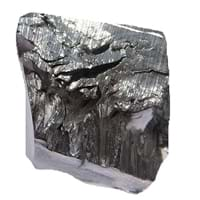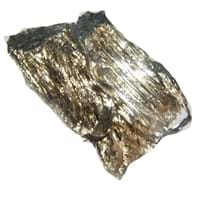Lutetium vs Samarium
Periodic Table
Symbol
Lu
Sm
Group Number
Not Available
Not Available
Period Number
6
6
Block
f block
f block
Element Family
Lanthanide
Lanthanide
CAS Number
7439943
99+
7440199
99+
Space Group Name
P63/mmc
R_ 3m
Space Group Number
194.00
5
166.00
6
Facts
Interesting Facts
- Metal dust of Lutetium element is highly explosive.
- Lutetium metal is corrosion resistance and acts stable in air.
- Samarium metals helps stimulating body metabolism.
- Samarium metals was 1st observed by Jean Charles Galissard de Marignac in Dydimia in 1853.
Sources
Found in Minerals, Mining, Ores of Minerals
Found in Minerals, Mining, Ores of Minerals
History
Who Discovered
Georges Urbain and Carl Auer von Welsbach
Lecoq de Boisbaudran
Discovery
In 1906
In 1879
Abundance
Abundance In Universe
1 * 10-8 %
30
5 * 10-7 %
19
Abundance In Sun
~0.0000001 %
26
~0.0000001 %
26
Abundance In Meteorites
0.00 %
99+
0.00 %
37
Abundance In Earth's Crust
0.00 %
99+
0.00 %
29
Abundance In Oceans
0.00 %
99+
0.00 %
40
Uses
Uses & Benefits
- Lutetium metal is used outside research. It has commercial uses like Industrial catalyst for cracking oil refineries of hydrocarbons .
- Magnets of Samarium cobalt alloy are stronger than that of Iron and hence, they are used in microwave application.
- Samarium metal also used in optical lasers and infrared absorbing glasses and as a neutron absorber.
Industrial Uses
NA
Aerospace Industry, Automobile Industry, Chemical Industry, Electrical Industry, Electronic Industry
Medical Uses
NA
NA
Other Uses
Alloys
Alloys, In Nuclear Reactors
Biological Properties
Toxicity
Low Toxic
Slightly Toxic
Present in Human Body
No
Yes
In Blood
Not Available
0.01 Blood/mg dm-3
22
Physical Properties
Melting Point
1,652.00 °C
19
1,072.00 °C
99+
Boiling Point
3,402.00 °C
19
1,900.00 °C
99+
Appearance
Physical State
Solid
Solid
Color
Silvery White
Silvery White
Luster
Metallic
Lustrous
Hardness
Brinell Hardness
893.00 MPa
10
441.00 MPa
27
Vickers Hardness
1,160.00 MPa
8
412.00 MPa
24
Speed of Sound
Not Available
2,130.00 m/s
99+
Optical Properties
Allotropes
No
No
α Allotropes
Not Available
Not Available
β Allotropes
Not Available
Not Available
γ Allotropes
Not Available
Not Available
Chemical Properties
Chemical Formula
Lu
Sm
Isotopes
Known Isotopes
35
4
30
9
Electronegativity
Pauling Electronegativity
1.27
34
1.17
40
Allred Rochow Electronegativity
1.14
28
1.07
32
Electropositivity
Pauling Electropositivity
2.73
20
2.83
14
Ionization Energies
1st Energy Level
523.50 kJ/mol
99+
544.50 kJ/mol
99+
2nd Energy Level
1,340.00 kJ/mol
99+
1,070.00 kJ/mol
99+
3rd Energy Level
2,022.30 kJ/mol
99+
2,260.00 kJ/mol
99+
4th Energy Level
4,370.00 kJ/mol
28
3,990.00 kJ/mol
37
5th Energy Level
6,445.00 kJ/mol
21
Not Available
Electrochemical Equivalent
2.18 g/amp-hr
23
1.87 g/amp-hr
34
Electron Work Function
3.30 eV
33
2.70 eV
99+
Other Chemical Properties
Anti Corrosion, Ionization, Radioactive Isotopes, Solubility
Ionization, Radioactive Isotopes
Atomic Properties
Atomic Number
71
99+
62
99+
Electron Configuration
[Xe] 6s2 4f14 5d1
[Xe] 4f6 6s2
Crystal Structure
Hexagonal Close Packed (HCP)
Rhombohedral (RHO)
Crystal Lattice
BCC-Crystal-Structure-.jpg#100
RHO-Crystal-Structure-of-Samarium.jpg#100
Atom
Number of Protons
71
99+
62
99+
Number of Neutrons
104
30
88
39
Number of Electrons
71
99+
62
99+
Radius of an Atom
Atomic Radius
174.00 pm
20
180.00 pm
14
Covalent Radius
187.00 pm
20
198.00 pm
13
Van der Waals Radius
221.00 pm
22
229.00 pm
20
Atomic Weight
174.97 amu
40
150.36 amu
99+
Atomic Volume
17.78 cm3/mol
30
19.95 cm3/mol
19
Adjacent Atomic Numbers
Valence Electron Potential
50.90 (-eV)
26
44.80 (-eV)
37
Lattice Constant
350.31 pm
99+
362.10 pm
33
Lattice Angles
π/2, π/2, 2 π/3
π/2, π/2, 2 π/3
Lattice C/A Ratio
1.59
10
Not Available
Mechanical Properties
Density
Density At Room Temperature
9.84 g/cm3
38
7.52 g/cm3
99+
Density When Liquid (at m.p.)
9.30 g/cm3
22
7.16 g/cm3
32
Tensile Strength
Not Available
Not Available
Viscosity
Not Available
Not Available
Vapor Pressure
Vapor Pressure at 1000 K
0.00 (Pa)
33
0.94 (Pa)
9
Vapor Pressure at 2000 K
3.18 (Pa)
11
Not Available
Elasticity properties
Shear Modulus
27.20 GPa
26
19.50 GPa
34
Bulk Modulus
47.60 GPa
23
37.80 GPa
35
Young's Modulus
68.60 GPa
30
49.70 GPa
37
Poisson Ratio
0.26
21
0.27
19
Other Mechanical Properties
NA
NA
Magnetic Properties
Magnetic Characteristics
Specific Gravity
9.84
29
7.52
99+
Magnetic Ordering
Paramagnetic
Paramagnetic
Electrical Properties
Electrical Property
Conductor
Conductor
Resistivity
582.00 nΩ·m
9
0.94 nΩ·m
99+
Electrical Conductivity
0.02 106/cm Ω
99+
0.01 106/cm Ω
99+
Electron Affinity
50.00 kJ/mol
21
50.00 kJ/mol
21
Thermal Properties
Specific Heat
0.15 J/(kg K)
36
0.20 J/(kg K)
31
Molar Heat Capacity
26.86 J/mol·K
24
29.54 J/mol·K
7
Thermal Conductivity
16.40 W/m·K
99+
13.30 W/m·K
99+
Critical Temperature
Not Available
Not Available
Thermal Expansion
9.90 µm/(m·K)
40
12.70 µm/(m·K)
30
Enthalpy
Enthalpy of Vaporization
355.90 kJ/mol
22
166.40 kJ/mol
99+
Enthalpy of Fusion
18.70 kJ/mol
13
8.62 kJ/mol
40
Enthalpy of Atomization
398.00 kJ/mol
20
209.00 kJ/mol
99+
Standard Molar Entropy
51.00 J/mol.K
30
69.60 J/mol.K
15
|
||
|
||
|












